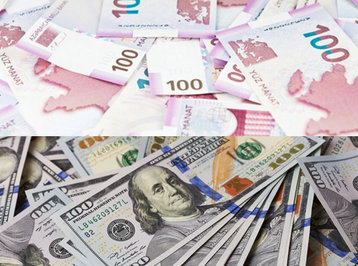Central Bank brings new procedures to regulate currency market

By Nigar Orujova
Azerbaijan’s national currency manat continues to be the central character of the day for the most part of the population as it has switched to the free-floating rate in December end. The heart-to-heart talk between manat and dollar continues on the background of the oil prices drama.
At present, the official exchange rate of the manat against the U.S. dollar was set at 1.5626 manat on January 7, the same as it was on January 6.
This week, the Central Bank of Azerbaijan has moved to the definition of the manat through auctions. Thus, the average rate of manat is established based on inter-bank transactions in the foreign exchange market.
Vahid Ahmadov, a member of the Parliament, believes that there is nothing irregular in this connection, as the free-floating rate in Azerbaijan is regulated. The manat is affected by the oil prices on the world markets, and the decrease of oil prices influence the national currency rate, he said.
The prices of oil continue falling in the world markets, decreasing Azerbaijani Azeri Light crude oil by $1.59 to stand at $35.77 on January 7. Meanwhile, the U.S. Light crude oil stands at $33.07, and price of the Brent crude oil to trade at $33.19.
Calculations of the global oil market analysts are not comforting, saying that oil prices may drop to $25/b or even lower this year.
Ahmadov said, the CBA is not depreciating the manat sharply now, a soft devaluation will continue, and hardly anything can be done as Azerbaijan’s economy is based on oil production, and if the non-oil sector will not develop, the manat’s rate will be problematic.
The manat-dollar-oil-prices triangle stroke the population in Azerbaijan, as the country mostly imports products from abroad buying them with dollars, which increases the price in manats.
“There are a number of suggestions to solve this problem,” Ahmadov said. “We should study the structure of the import, and change it. Stop the import of some products for a period, bringing mostly what the population needs now.”
In this unstable situation, the CBA tries to manage the new rate and decrease the number of multiplying speculators.
The Bank tightened currency exchange rules on January 6. From now on, exchange of currency in the amount exceeding $500 will be carried out only with the identity card. This rule regulate foreign currency exchange in banks, their branches and offices, local branches of foreign banks and the national postal operator.
The new rules presuppose that each foreign exchange service is entered into the bank’s system, and the client receives a bank statement.
“Banks are free to determine exchange rates of purchase and sale of foreign currency, and in various offices currency rates may differ,” the CBA said, noting that currency exchange rate may vary during the day.
MP Ahmadov said that he endorse this initiative. Payments are performed only in manats in Azerbaijan. While earlier, a lot of foreign currency came to Azerbaijan due to the oil and gas export, in today’s situation, it will be better to reveal all the currency exchange in the country, he added.
Moreover, he added, that it will be better to make all the currency exchanges carried out only with the ID, despite the exchanging sum, like it works in Turkey.
Banks get encouragement
The situation first affects national banks, which number reaches 43, with 758 branches and 165 offices.
The Central Bank has changed the reservation rates for poor and risky assets of banks, in order to neutralize the impact of macroeconomic risks on the banking sector within the framework of countercyclical prudential regulation of the sector and support for financial stability.
The bank has lowered the reservation rate for poor assets to 25 percent, and the reservation rate for risky assets – up to 50 percent. Previously, the reservation rate for poor and risky assets was 30 percent and 60 percent, respectively.
At the same time, the rate on satisfactory assets amounts to one percent, restructured controlled assets – two percent, non-restructured controlled assets – one percent, and irredeemable assets – 100 percent.
In addition, the Central Bank has amended the rules of restructured assets classification.
